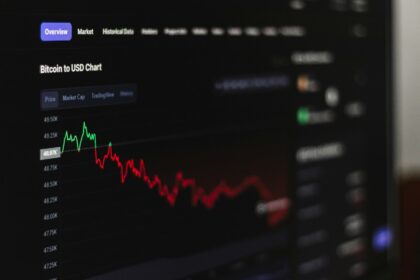Imagine you are building a house. You wouldn’t just start throwing bricks and wood together. You would need a plan. First, you’d hire an architect to create a detailed blueprint. This blueprint defines the structure, the layout, and the overall vision for the house. This is your Governance.
Next, you’d bring in a structural engineer. Their job is to look at your blueprint and the land, and identify potential problems. Is the soil stable? Will the foundation support the weight? What happens in an earthquake? They identify and plan for what could go wrong. This is your Risk Management.
Finally, throughout the building process, a city inspector visits the site. They check to make sure your electrical wiring is up to code, your plumbing meets safety standards, and you’re following all the local building regulations. This is your Compliance.
In the digital world, your business is that house. And to build it safely and keep it standing strong, you need a similar set of plans and controls. This is the core idea behind Governance, Risk, and Compliance (GRC). It is a structured approach that helps a company align its goals with its cybersecurity efforts, all while managing risks and following the rules. It’s the blueprint for building and maintaining digital trust.
For many, the term GRC sounds like complex corporate jargon. It sounds like something reserved for massive corporations with entire departments of lawyers and auditors. But that’s not true. At its heart, GRC is a strategic way of thinking that is essential for any modern business, big or small. It’s not about creating roadblocks; it’s about creating a safe path for growth.
As Guillaume Noé, a government Head of Cyber Resilience, once said, “Cybersecurity is like brakes on a car — it’s not there to stop you, it’s there to give you control and confidence to move forward safely.” This perfectly captures the spirit of GRC. It’s the framework that gives you the confidence to innovate, adopt new technology, and pursue ambitious goals, knowing that you have the controls in place to do it securely.
Why is this so important right now? Because we live in a world with a growing web of regulations, increasing cyber threats, and customers who have never been more aware of their data privacy. A robust grc cyber security strategy is no longer a “nice-to-have.” It is a fundamental requirement for survival and success.
Deconstructing GRC: The Three Pillars of Cyber Resilience
GRC might seem like one big, complicated concept, but it’s actually made up of three distinct, yet interconnected, pillars. Understanding each one individually is the first step to seeing how they work together to protect your business. Let’s break them down in simple terms.
Governance (The ‘G’): The Rulebook and the Captain
Governance is all about direction and control. It answers the fundamental questions: “Who is in charge?” and “What are the rules?” It’s the process of setting the overall strategy for your organization and making sure everyone is steering in the same direction. This isn’t just an IT function; it starts at the very top, with the board of directors and senior management.
Good governance involves creating clear policies, defining roles and responsibilities, and ensuring everyone is held accountable for their actions. It sets the ethical standards for how the company operates. For example, a governance policy might state that only specified personnel are allowed to download and install new software on company computers. This isn’t a random rule. It’s a strategic decision made by leadership to reduce the risk of malware and ensure all software is properly vetted and secure. Governance provides the oversight that guides all other security activities.
Risk Management (The ‘R’): The Lookout and the Navigator
Risk management is about preparing for the unexpected. It answers the question: “What could go wrong, and what are we going to do about it?” Every business faces risks. These can be financial risks, legal risks, strategic risks, and, of course, cybersecurity risks. A proper risk management program helps you proactively identify these potential threats, assess how likely they are to happen, and figure out how to reduce their impact.
It’s about being a lookout on a ship, constantly scanning the horizon for icebergs. For instance, a company might use a risk assessment to find security loopholes in its computer systems, like an outdated server with a known vulnerability. The risk management process is what drives the team to apply a fix before a hacker can exploit that weakness. It’s a proactive approach to minimizing harm and ensuring business continuity, rather than just reacting after a disaster strikes.
Compliance (The ‘C’): The Map and the Law of the Sea
Compliance is simply about following the rules. It answers the question: “Are we doing what we’re supposed to be doing?” These rules can come from two places. First, there are external laws and regulations set by governments and industry bodies. Think of data protection laws like GDPR in Europe or healthcare privacy laws like HIPAA in the United States. Second, there are internal rules—the corporate policies that your own governance team has created.
Staying compliant protects your business from serious consequences, including hefty fines, legal battles, and severe damage to your reputation. For example, a healthcare organization must comply with HIPAA to protect the privacy of its patients. This isn’t optional. It’s a legal requirement. Compliance involves implementing procedures and controls to ensure that all your business activities adhere to these mandatory rules.
To make this even clearer, here is a simple table summarizing the three pillars:
| Pillar | Core Question | Primary Goal | Simple Example |
|---|---|---|---|
| Governance | Who is in charge and what are the rules? | To provide direction, oversight, and accountability. | The board of directors creates a policy that all sensitive customer data must be encrypted. |
| Risk Management | What could go wrong and how do we prepare? | To identify, assess, and reduce potential threats. | The IT team scans for outdated software and updates it to prevent a known vulnerability from being exploited. |
| Compliance | Are we following the rules? | To adhere to laws, regulations, and internal policies. | Ensuring customer data is handled according to GDPR rules to avoid large fines and reputational damage. |
It’s important to understand that these pillars are not just a random list. There is a logical flow between them. Governance is the foundation. It sets the rules and the organization’s “risk appetite”—how much risk the business is willing to accept to achieve its goals. Without good governance, risk management becomes chaotic, and compliance becomes a meaningless box-ticking exercise. Strong governance leads to intelligent risk management, which in turn results in effective compliance.
The Power of Integration: Why G, R, and C are Stronger Together
Now that we’ve broken down the three pillars, you might be thinking, “My company already does these things. We have a legal team for compliance and an IT team for risk.” That may be true. But the real magic of GRC happens when these three functions stop working in isolation and start working together as one coordinated system.
Imagine this all-too-common scenario. The legal department (the Compliance team) drafts a new, stricter policy on how customer data can be used for marketing. They publish it on the company’s internal website and consider their job done. Meanwhile, the IT department (the Risk Management team) is evaluating a powerful new marketing analytics tool. They are focused on its technical capabilities and security features, but they are completely unaware of the new data usage policy. They purchase and implement the tool, which then starts collecting and using customer data in a way that directly violates the company’s new policy.
This is what happens when you have “silos.” Each department is working hard, but they aren’t talking to each other. The result is chaos. The company is now exposed to a major compliance risk, resources have been wasted on a non-compliant tool, and there’s a huge security gap. This is the problem that an integrated grc cyber security strategy is designed to solve.
GRC breaks down these silos. It creates a unified approach where information is shared, and efforts are coordinated across the entire organization. Instead of being separate functions, governance, risk, and compliance become part of a single, cohesive model. This integration creates a powerful positive feedback loop:
- The Risk Management team identifies a new threat—for example, a sharp increase in sophisticated phishing attacks targeting the finance department.
- This risk data is immediately shared with the Governance team. They don’t just see a technical problem; they see a direct business risk. In response, they update the company’s security policy to mandate multi-factor authentication (MFA) for all financial systems.
- Now, the Compliance team’s job is easier and more effective. Instead of just auditing whether a vague “security policy” is being followed, they can now audit for a specific, measurable control: is MFA enabled for all finance users?
This cycle—where risk data informs smarter governance, which leads to more effective compliance, which in turn reduces risk—is the heart of a mature GRC program. It transforms your security from a static checklist into a dynamic, intelligent system that continuously adapts to new threats. The result is reduced wastage, increased efficiency, and a holistic, 360-degree view of your organization’s security posture.
The GRC Toolkit: A Simple Guide to Frameworks and Regulations
Getting started with GRC doesn’t mean you have to invent everything from scratch. There are many established frameworks and regulations that act as helpful toolkits or instruction manuals. Think of them as proven recipes for building a strong security program. You don’t need to be an expert in all of them, but understanding what they are and what they’re for is incredibly valuable.
Cybersecurity Frameworks: The “How-To” Guides
Frameworks are sets of best practices and guidelines that help you structure your GRC program. They are typically voluntary but provide a clear path to follow.
| Framework | Primary Focus | Best For… |
|---|---|---|
| NIST Cybersecurity Framework (CSF) | Providing a flexible, risk-based lifecycle (Identify, Protect, Detect, Respond, Recover) to manage cybersecurity. | Organizations of any size, especially in the US, looking for a practical and adaptable starting point for improving their cybersecurity posture. |
| ISO 27001 | Establishing a formal, certifiable Information Security Management System (ISMS) based on risk assessment and continuous improvement. | Organizations that want to demonstrate a strong, internationally recognized commitment to information security to clients and partners. |
| COBIT | Aligning IT governance and management with overall business strategy and goals. | Organizations that want to ensure their IT investments and processes are creating value and supporting the broader business objectives. |
Key Regulations: The “Rulebooks” You Must Follow
Unlike frameworks, regulations are mandatory laws. If they apply to your business, you must follow them, or you will face legal and financial penalties. Here are three of the most common ones.
| Regulation | What Is It? | Who Does It Affect? | Core Requirement in One Sentence |
|---|---|---|---|
| GDPR (General Data Protection Regulation) | The EU’s strict law for data privacy and protection. | Any business that processes the personal data of people in the European Union. | You must collect data fairly, use it only for a specific purpose, and protect the individual’s fundamental right to privacy. |
| HIPAA (Health Insurance Portability and Accountability Act) | A US law that protects sensitive patient health information (PHI). | Healthcare providers, health plans, and their business associates in the United States. | You must implement strict administrative, physical, and technical safeguards to ensure the confidentiality and security of all patient data. |
| PCI DSS (Payment Card Industry Data Security Standard) | A global security standard for protecting credit card data. | Any business that accepts, processes, stores, or transmits credit card information. | You must build and maintain a secure network and environment to protect cardholder data from fraud and data breaches. |
Navigating these frameworks and regulations is a core part of any grc cyber security program. They provide the structure and the rules of the road needed to operate safely in today’s digital economy.
When GRC Fails: A Cautionary Tale of a Real-World Breach
Theory and frameworks are useful, but nothing illustrates the importance of GRC quite like a real-world failure. Let’s look at a cautionary tale that shows what happens when these principles are ignored. This isn’t a story about a brilliant, unstoppable hacker; it’s a story about a simple, preventable mistake.
The Story: The Pegasus Airlines Data Exposure
In March 2022, a cybersecurity research team made a startling discovery. Pegasus Airlines, a major Turkish airline, had left a massive trove of sensitive data completely exposed on the internet. We’re not talking about a small leak. It was 6.5 terabytes of data—nearly 23 million files—sitting on an unprotected cloud server that anyone could access. This data included flight charts, navigation materials, software source code, and the personally identifiable information (PII) of flight crew members.
So, what went wrong? It wasn’t a sophisticated cyberattack. The cause was shockingly simple: a misconfigured cloud server. A system administrator had made a mistake and failed to properly secure the environment, leaving it without password protection. Let’s analyze this incident through the lens of GRC to see the cascading failures.
- Governance Failure: The first question is, where was the oversight? A strong governance program would have established clear policies and procedures for configuring cloud assets. It would have defined who was responsible and put checks in place to prevent a single person’s error from causing such a massive exposure. The fact that this could happen points to a weak governance structure and a lack of accountability for cloud security.
- Risk Management Failure: The risk of a misconfigured cloud storage bucket is one of the most common and well-known threats in cybersecurity today. A proper risk management process should have identified this critical data asset, classified it as highly sensitive, and ensured that appropriate security controls were in place and regularly tested. This was a catastrophic failure to manage a predictable risk.
- Compliance Failure: The exposed data included the personal information of employees. This put the airline in direct violation of Turkey’s Law on the Protection of Personal Data (LPPD), a strict regulation similar to Europe’s GDPR. This failure exposed the company to significant potential fines and legal action, demonstrating a clear breakdown in their compliance process.
This story is a powerful reminder that some of the biggest threats to a business aren’t external hackers, but internal process failures. As the famous security consultant Kevin Mitnick once said, “Millions on firewalls and encryption mean nothing if humans are the weakest link.” A mature GRC program is not just about buying technology; it’s about building a culture of security, providing proper training, and creating robust processes to prevent simple human error from turning into a disaster. The human factor is the lynchpin of GRC.
Imagine constructing a house. You wouldn’t start throwing materials randomly. First, you’d hire an architect to create a detailed blueprint. This blueprint outlines the structure, layout, and vision for the house. This is your Governance.
Next, a structural engineer reviews your blueprint and the land. They check if the soil is stable and if the foundation can support the weight. They also plan for possible problems like earthquakes. This is your Risk Management.
Throughout construction, a city inspector visits the site. They ensure the electrical wiring and plumbing meet safety standards. They also check if you’re following local building regulations. This is your Compliance.
Your business is like that house in the digital world. To build it safely and maintain its strength, you need a similar set of plans and controls. This is the core idea behind Governance, Risk, and Compliance (GRC). It aligns your goals with cybersecurity efforts, manages risks, and follows rules. It’s the blueprint for digital trust.
For many, GRC seems like complex corporate jargon. It’s seen as something for large corporations with many lawyers and auditors. But, it’s a strategic way of thinking essential for any business, big or small. It’s not about creating obstacles; it’s about paving a safe path for growth.
Guillaume Noé, a government Head of Cyber Resilience, once said, “Cybersecurity is like brakes on a car — it’s not there to stop you, it’s there to give you control and confidence to move forward safely.” This captures the essence of GRC. It’s the framework that gives you confidence to innovate, adopt new technology, and pursue ambitious goals securely.
Why is this so important now? We live in a world with more regulations, cyber threats, and customers who care about their data privacy. A strong grc cyber security strategy is no longer optional. It’s a must for survival and success.
Deconstructing GRC: The Three Pillars of Cyber Resilience
GRC might seem complex, but it’s made up of three distinct, yet interconnected, pillars. Understanding each one is the first step to seeing how they protect your business. Let’s break them down simply.
Governance (The ‘G’): The Rulebook and the Captain
Governance is about direction and control. It answers the questions: “Who is in charge?” and “What are the rules?” It sets the overall strategy and ensures everyone is on the same path. This isn’t just an IT function; it starts with the board of directors and senior management.
Good governance involves clear policies, defined roles, and accountability. It sets ethical standards for the company’s operation. For example, a governance policy might state that only specified personnel are allowed to download and install new software on company computers. This isn’t a random rule. It’s a strategic decision to reduce malware risk and ensure vetted software. Governance provides the oversight for all security activities.
Risk Management (The ‘R’): The Lookout and the Navigator
Risk management is about preparing for the unexpected. It answers the question: “What could go wrong, and what are we going to do about it?” Every business faces various risks. These can include financial, legal, strategic, and cybersecurity risks. A good risk management program helps identify these threats, assess their likelihood, and plan how to mitigate their impact.
It’s akin to being a lookout on a ship, scanning the horizon for icebergs. For instance, a company might use a risk assessment to find security loopholes in its computer systems, like an outdated server with a known vulnerability. The risk management process is what drives the team to apply a fix before a hacker can exploit that weakness. It’s a proactive approach to minimize harm and ensure business continuity, unlike just reacting after a disaster strikes.
Compliance (The ‘C’): The Map and the Law of the Sea
Compliance is simply about following the rules. It answers the question: “Are we doing what we’re supposed to be doing?” These rules come from external laws and regulations, as well as internal corporate policies. Think of data protection laws like GDPR in Europe or healthcare privacy laws like HIPAA in the United States.
Staying compliant protects your business from serious consequences, including hefty fines, legal battles, and severe damage to your reputation. For example, a healthcare organization must comply with HIPAA to protect the privacy of its patients. This isn’t optional. It’s a legal requirement. Compliance involves implementing procedures and controls to ensure all business activities adhere to these mandatory rules.
To make this even clearer, here is a simple table summarizing the three pillars:
| Pillar | Core Question | Primary Goal | Simple Example |
|---|---|---|---|
| Governance | Who is in charge and what are the rules? | To provide direction, oversight, and accountability. | The board of directors creates a policy that all sensitive customer data must be encrypted. |
| Risk Management | What could go wrong and how do we prepare? | To identify, assess, and reduce possible threats. | The IT team scans for outdated software and updates it to prevent a known vulnerability from being exploited. |
| Compliance | Are we following the rules? | To adhere to laws, regulations, and internal policies. | Ensuring customer data is handled according to GDPR rules to avoid large fines and reputational damage. |
It’s important to understand that these pillars are not just a random list. There is a logical flow between them. Governance is the foundation. It sets the rules and the organization’s “risk appetite”—how much risk the business is willing to accept to achieve its goals. Without good governance, risk management becomes chaotic, and compliance becomes a meaningless box-ticking exercise. Strong governance leads to intelligent risk management, which in turn results in effective compliance.
The Power of Integration: Why G, R, and C are Stronger Together
Now that we’ve broken down the three pillars, you might be thinking, “My company already does these things. We have a legal team for compliance and an IT team for risk.” That may be true. But the real magic of GRC happens when these three functions stop working in isolation and start working together as one coordinated system.
Imagine this all-too-common scenario. The legal department (the Compliance team) drafts a new, stricter policy on how customer data can be used for marketing. They publish it on the company’s internal website and consider their job done. Yet, the IT department (the Risk Management team) is evaluating a powerful new marketing analytics tool. They are focused on its technical capabilities and security features, but they are completely unaware of the new data usage policy. They purchase and implement the tool, which then starts collecting and using customer data in a way that directly violates the company’s new policy.
When departments operate in silos, chaos ensues. Each works hard but fails to communicate. This leads to a significant compliance risk, wasted resources, and a security gap. An integrated grc cyber security strategy aims to solve this issue.
GRC breaks down these silos. It fosters a unified approach, ensuring information and efforts are coordinated across the organization. Governance, risk, and compliance merge into a cohesive model. This integration sparks a powerful positive feedback loop.
- The Risk Management team identifies a new threat—for example, a sharp increase in sophisticated phishing attacks targeting the finance department.
- This risk data is immediately shared with the Governance team. They recognize it as a direct business risk. In response, they update the company’s security policy to mandate multi-factor authentication (MFA) for all financial systems.
- Now, the Compliance team’s job is easier and more effective. Instead of just auditing whether a vague “security policy” is being followed, they can now audit for a specific, measurable control: is MFA enabled for all finance users?
This cycle—where risk data informs smarter governance, which leads to more effective compliance, which in turn reduces risk—is the heart of a mature GRC program. It transforms your security from a static checklist into a dynamic, intelligent system that continuously adapts to new threats. The result is reduced wastage, increased efficiency, and a holistic, 360-degree view of your organization’s security posture.
The GRC Toolkit: A Simple Guide to Frameworks and Regulations
Starting with GRC doesn’t mean reinventing the wheel. Many established frameworks and regulations serve as helpful toolkits or instruction manuals. They are like proven recipes for building a strong security program. Understanding them is incredibly valuable, even if you don’t need to be an expert in all.
Cybersecurity Frameworks: The “How-To” Guides
Frameworks offer sets of best practices and guidelines for structuring your GRC program. They are typically voluntary but provide a clear path to follow.
| Framework | Primary Focus | Best For… |
|---|---|---|
| NIST Cybersecurity Framework (CSF) | Providing a flexible, risk-based lifecycle (Identify, Protect, Detect, Respond, Recover) to manage cybersecurity. | Organizations of any size, specially in the US, looking for a practical and adaptable starting point for improving their cybersecurity posture. |
| ISO 27001 | Establishing a formal, certifiable Information Security Management System (ISMS) based on risk assessment and continuous improvement. | Organizations that want to demonstrate a strong, internationally recognized commitment to information security to clients and partners. |
| COBIT | Aligning IT governance and management with overall business strategy and goals. | Organizations that want to ensure their IT investments and processes are creating value and supporting the broader business objectives. |
Key Regulations: The “Rulebooks” You Must Follow
Unlike frameworks, regulations are mandatory laws. If they apply to your business, you must follow them, or you will face legal and financial penalties. Here are three of the most common ones.
| Regulation | What Is It? | Who Does It Affect? | Core Requirement in One Sentence |
|---|---|---|---|
| GDPR (General Data Protection Regulation) | The EU’s strict law for data privacy and protection. | Any business that processes the personal data of people in the European Union. | You must collect data fairly, use it only for a specific purpose, and protect the individual’s fundamental right to privacy. |
| HIPAA (Health Insurance Portability and Accountability Act) | A US law that protects sensitive patient health information (PHI). | Healthcare providers, health plans, and their business associates in the United States. | You must implement strict administrative, physical, and technical safeguards to ensure the confidentiality and security of all patient data. |
| PCI DSS (Payment Card Industry Data Security Standard) | A global security standard for protecting credit card data. | Any business that accepts, processes, stores, or transmits credit card information. | You must build and maintain a secure network and environment to protect cardholder data from fraud and data breaches. |
Understanding these frameworks is essential for any grc cyber security program. They offer the necessary structure and rules for safe operation in the digital world.
When GRC Fails: A Cautionary Tale of a Real-World Breach
Theory and frameworks are useful, but nothing illustrates the importance of GRC like a real-world failure. A cautionary tale shows what happens when these principles are ignored. It’s not about a brilliant hacker; it’s about a simple, preventable mistake.
The Story: The Pegasus Airlines Data Exposure
In March 2022, a cybersecurity research team made a startling discovery. Pegasus Airlines, a major Turkish airline, had left a massive trove of sensitive data completely exposed on the internet. This wasn’t a small leak. It was 6.5 terabytes of data—nearly 23 million files—on an unprotected cloud server. Anyone could access it. The data included flight charts, navigation materials, software source code, and the personally identifiable information (PII) of flight crew members.
So, what went wrong? It wasn’t a sophisticated cyberattack. The cause was shockingly simple: a misconfigured cloud server. A system administrator had made a mistake and failed to properly secure the environment. It was left without password protection. Let’s analyze this incident through the lens of GRC to see the cascading failures.
- Governance Failure: The first question is, where was the oversight? A strong governance program would have established clear policies and procedures for configuring cloud assets. It would have defined who was responsible and put checks in place to prevent a single person’s error from causing such a massive exposure. The fact that this could happen points to a weak governance structure and a lack of accountability for cloud security.
- Risk Management Failure: The risk of a misconfigured cloud storage bucket is one of the most common and well-known threats in cybersecurity today. A proper risk management process should have identified this critical data asset, classified it as highly sensitive, and ensured that appropriate security controls were in place and regularly tested. This was a catastrophic failure to manage a predictable risk.
- Compliance Failure: The exposed data included the personal information of employees. This put the airline in direct violation of Turkey’s Law on the Protection of Personal Data (LPPD), a strict regulation similar to Europe’s GDPR. This failure exposed the company to significant fines and legal action, demonstrating a clear breakdown in their compliance process.
This story is a powerful reminder that some of the biggest threats to a business aren’t external hackers, but internal process failures. As the famous security consultant Kevin Mitnick once said, “Millions on firewalls and encryption mean nothing if humans are the weakest link.” A mature GRC program is not just about buying technology; it’s about building a culture of security, providing proper training, and creating robust processes. The human factor is the lynchpin of GRC.
The People Behind the Process: Key Roles in a GRC Strategy
GRC is not an automated system that runs on its own. It’s a human endeavor. Building a successful GRC program requires a team of dedicated people from across the organization working together. It truly is a team sport. Here are some of the key players and their roles.
The Chief Information Security Officer (CISO)
The CISO is the strategic leader of the cybersecurity program. In the past, this role was often seen as a purely technical manager buried within the IT department. Today, the modern CISO is a key business executive. Their job is to translate complex technical risks into business terms that the board of directors can understand. They are responsible for establishing the overall GRC strategy, aligning it with business goals, and ensuring the entire organization is protected. A successful grc cyber security program often lives or dies with the leadership of the CISO.
The Board of Directors
Ultimately, governance starts at the top. The Board of Directors holds the ultimate responsibility for overseeing the organization’s risk management. They are responsible for setting the company’s “risk appetite”—deciding how much risk the business is willing to take on. As one board director, Colin Low, stated, “If cybersecurity isn’t on the board calendar, it won’t get the attention it deserves. It must be embedded into governance structures like any other critical business risk.”
The Data Protection Officer (DPO)
For organizations that must comply with strict privacy laws like GDPR, the DPO is a critical role. This person is the company’s privacy champion. Their job is to oversee the data protection strategy, manage compliance with privacy regulations, and act as the point of contact for data protection authorities.
Risk and Compliance Analysts
These are the dedicated professionals on the ground. They are the ones who perform the day-to-day GRC activities. This includes conducting risk assessments, monitoring security controls, tracking changes in regulations, and managing internal audits. They are the engine room of the GRC program.
All Employees
Perhaps the most important role of all is played by every single employee. A strong security culture means that everyone in the organization understands they are the first line of defense. From the receptionist who is trained to spot a visitor trying to tailgate into a secure area, to the accountant who knows how to identify a phishing email, a security-aware workforce is one of the most effective controls a company can have.
The success of these roles hinges on collaboration. A CISO who cannot communicate effectively with the board will fail to get the resources they need. That is why the partnership between the CISO, the General Counsel (the top lawyer), and the board is so critical. As Natalie Salunke, a General Counsel and Board Advisor, wisely noted, “When the CISO and GC present cyber risk together, it validates the message. The board sees two key voices aligned, which builds trust and drives action.”
The Business Payoff: Tangible Benefits of a Strong GRC Program
At this point, you might be thinking, “This sounds like a lot of work and a lot of investment.” You’re right, it is. But the return on that investment is enormous. A strong GRC program isn’t a cost center; it’s a value creator. Let’s look at the tangible, bottom-line benefits that directly impact your business.
- Improved Decision-Making: GRC offers leaders a complete view of their organization. Understanding risks, obligations, and security posture enables smarter decisions. CISO Parrish Gunnels noted, “With a centralized platform, we now have instant visibility into cyber risks. It transformed how we communicate with leadership, ensuring we focus on what truly matters.“
- Increased Efficiency and Cost Savings: GRC breaks down silos and automates tasks, streamlining operations. It eliminates redundant work, freeing staff for strategic initiatives. A well-run GRC program can also lead to direct cost savings, such as lower cyber liability insurance premiums and reduced spending on last-minute, emergency audit preparations.
- Avoiding Fines and Penalties: This is a direct benefit. Compliance failures or data breaches can result in devastating fines. GDPR, for example, can levy fines up to 4% of a company’s global annual revenue. A well-designed GRC program is your best defense against these costly consequences.
- Enhanced Trust and Reputation: Trust is a valuable currency in today’s world. Demonstrating a strong commitment to protecting customer data builds a powerful reputation. This trust becomes a competitive advantage. Customers will choose to do business with the company they feel is the safest. As the influential CISO Stéphane Nappo stated, “Cybersecurity is much more than a matter of IT—it’s a business imperative.” Your GRC program is a testament to that imperative.
- Greater Resilience and Scalability: A business with a mature GRC framework is more resilient. When a new threat emerges or a new regulation is passed, you already have a system in place to adapt quickly. This allows your business to grow and scale seamlessly, without your risk and compliance processes breaking under the pressure.
A mature grc cyber security program transforms your company’s relationship with risk. You move from a reactive posture, driven by fear, to a proactive one, focused on opportunity. It becomes a key reason why customers and partners choose to work with you.
Your First Steps: Building a GRC Foundation
Getting started with GRC can feel daunting, but it doesn’t have to be. You don’t need to buy expensive software or hire a huge team on day one. The most important thing is to start. You can build a solid foundation by following a simple, four-step process. Think of it as a cycle of continuous improvement.
Step 1: Learn (Assess Your Situation)
You cannot protect what you do not know you have. The first step is to simply understand your own business from a security perspective. Start by making lists.
- What is your most important data? (e.g., customer lists, financial records, intellectual property)
- Where is this data stored? (e.g., on servers, in the cloud, on laptops)
- Who has access to it?
- What are your key software systems and applications?
This is not a technical exercise; it’s a business exercise. The goal is to identify your “crown jewels” and understand where your biggest risks might be.
Step 2: Align (Design Your Plan)
Based on what you learned, create a simple plan. You don’t need a 100-page document. Start with the basics. Define a few critical security policies. For example:
- A strong password policy (e.g., minimum length, complexity).
- A policy for acceptable use of company equipment.
- A simple plan for who to call if an employee suspects a security incident.
Make sure this plan is aligned with your business goals. The objective is to enable the business, not to hinder it.
Step 3: Perform (Put It Into Action)
A plan on a shelf is useless. Now it’s time to act. This is where you implement your basic controls. It could be as simple as:
- Rolling out multi-factor authentication (MFA) on key systems like email.
- Conducting a basic security awareness training session for all employees to teach them how to spot phishing emails.
- Communicating your new policies clearly to everyone in the organization.
Step 4: Review (Check Your Work)
GRC is not a “set it and forget it” project. It’s a continuous journey. Regularly, perhaps every quarter or twice a year, review your plan’s effectiveness. Are policies being followed? Have new risks appeared? What can be improved? This cycle of review and improvement strengthens your GRC program over time.
The most important takeaway is that starting small is infinitely better than not starting at all. The most critical first investment in your grc cyber security journey is not money for a fancy tool. It’s the time and effort of leadership to ask fundamental questions.
Conclusion: GRC as a Journey, Not a Destination
We’ve covered a lot of ground. Governance, Risk, and Compliance is not just corporate buzzwords. It’s an integrated, strategic framework essential for modern organizations. It’s the blueprint that combines Governance, Risk Management, and Compliance into a single, powerful system.
GRC is not a technical function confined to the IT department. It’s a core business strategy for building trust, demonstrating integrity, and achieving resilience in an uncertain world. A strong grc cyber security program is a journey of continuous improvement, not a one-time project.
In a world of constant change and evolving threats, a well-implemented GRC program is both the compass and the anchor. It allows your business to navigate with confidence, turn risk into opportunity, and achieve what early GRC thinkers called “principled performance”. This is the ability to reliably achieve your objectives while addressing uncertainty and acting with integrity.
Whether you are a small business owner, a department manager, or an aspiring executive, you can start this journey today. By embracing the principles of GRC, you are not just building a more secure business. You are building a better, more trustworthy, and more resilient one.
























